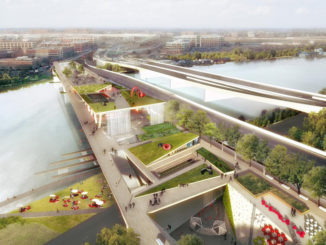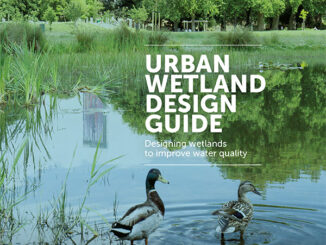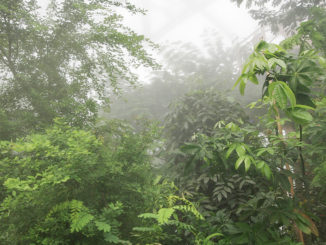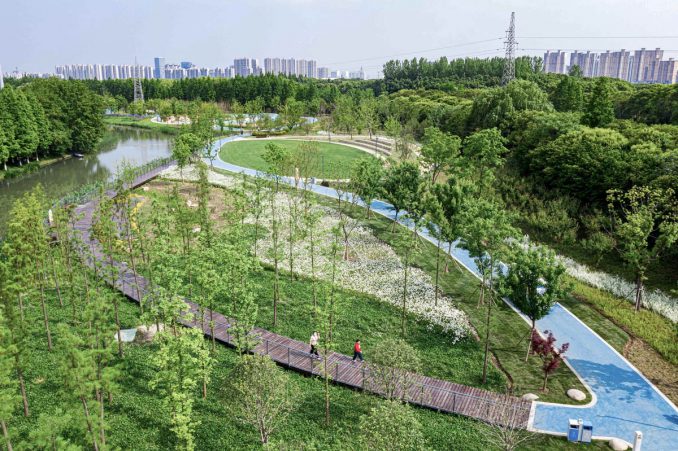
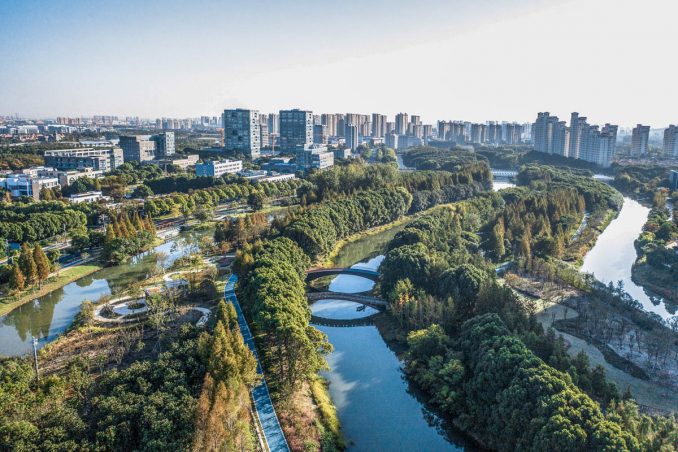
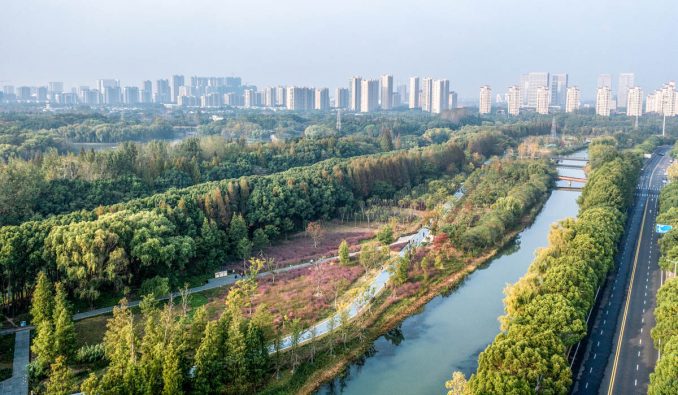
Kunshan & Miaojing River
20 km northwest of Shanghai lies Kunshan City. With a rich history as a watertown, Kunshan is woven together by its waterways resulting in 8,000 hectares of Kunshan being covered by water. This extensive infrastructure of canals has driven the development of the city from years of irrigated farming to an economy now that produces 70% of its GDP from innovative industries.
Kunshan West has been a growing region between the naturally preserved area of Kuilei Lake and the old town city center. An existing North-South core axis links major public open space amenities that include a large retail center at Central Lake, Forest Park, as well as sports and commerce centers to the south. Yangcheng Lake East Ecological Corridor runs West to East at north of Forest Park, connecting Kueilai Lake Reservoir to the central old town. Part of the large ecological connection, Miaojing River Central Water Corridor worked as the aqueduct, serving the municipal water to the majority of the population in Kunshan. Two water channels were formed at both sides of the Miaojing River to protect it from the adjacent runoffs and trees were densely planted as the buffer, resulting in this unique and large green area in the heart of the already developed urban setting.
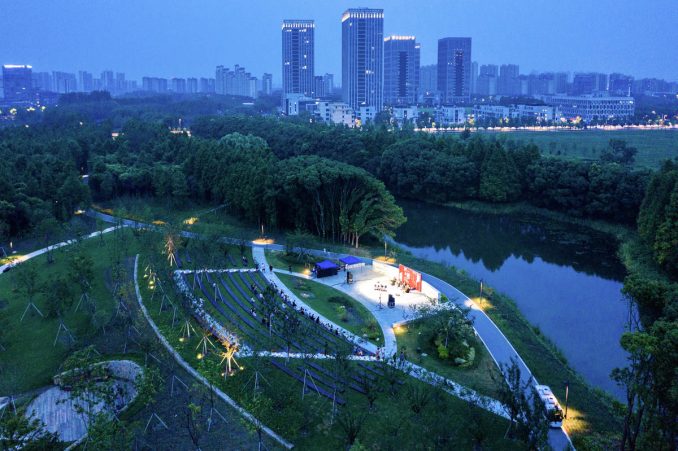
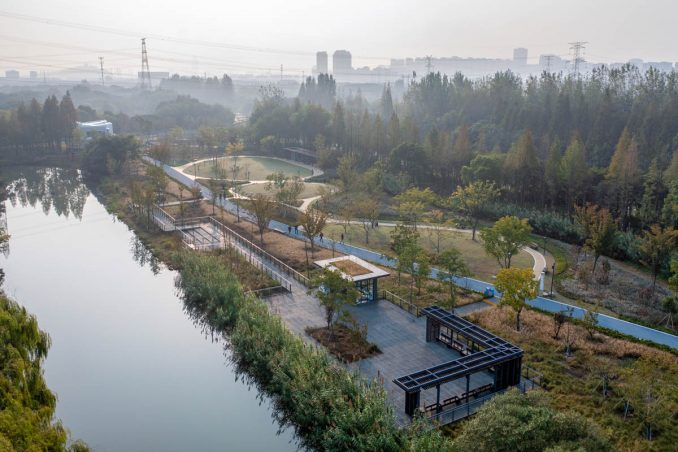
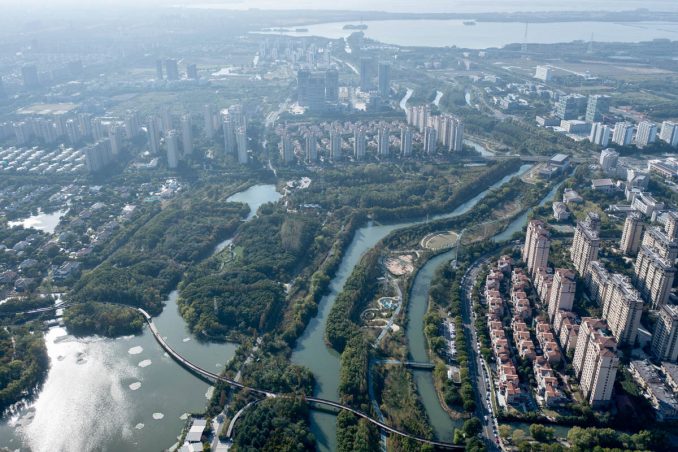
Design Strategy
Miaojing River encountered the opportunity to become an open space for the public after the city implemented the piping system to replace the function of the aqueduct. However, the isolation of this corridor produced a variety of issues. Highly dense forests with linear belts of single species of trees compete for resources resulting in low diversity and a lack of accessibility into the understory. An unhealthy riparian habitat can additionally be observed as a result of steep slopes on the banks of each channel.
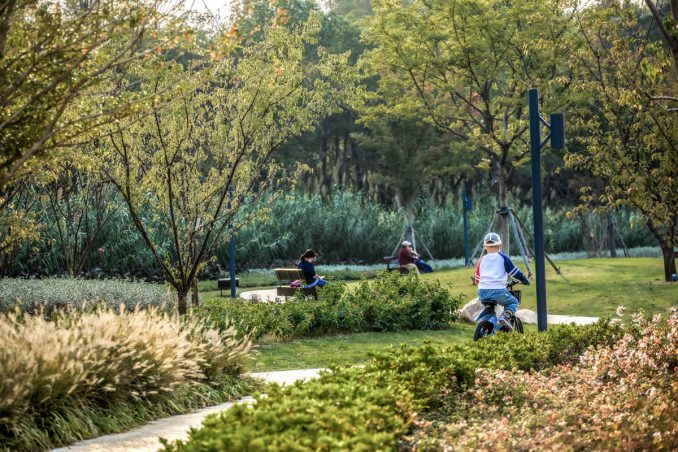
The overall design objective focuses on turning this hidden treasure into a public ecological “spine” of the Kunshan West District while preserving its existing natural, untouched, and poetic character.
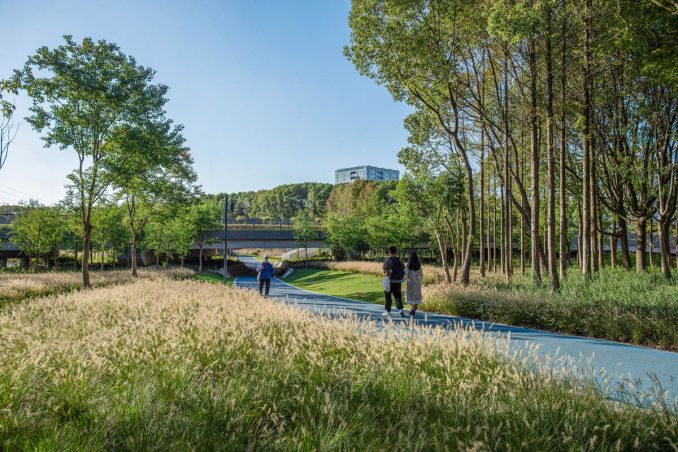
Entries with parking, bike rental, cafe kiosks, and resting areas are introduced at key intersections to connect north and south neighborhoods. The continuous trail system connects Kuilei Lake Area to Forest Park while keeping its distance from the central waterway to minimize the impact on the existing vegetation. Bridges are designed as part of the trail system. Tunnels and underpath are placed for areas being cut off by the city’s street grid. All the surfaces are designed to be permeable and elevated at the possible areas.
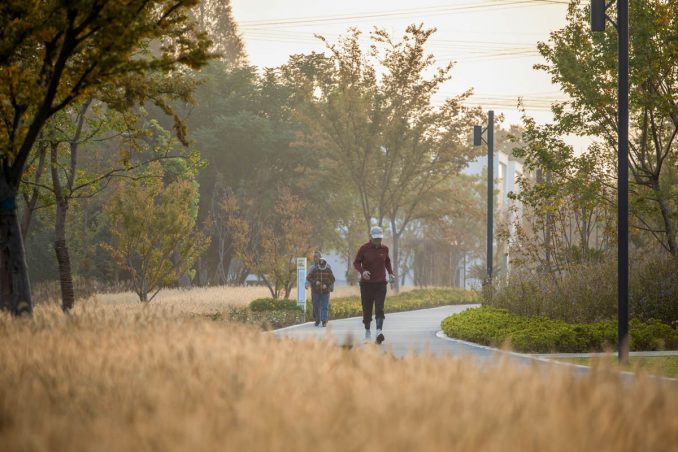
Diverse ecological zones are created in this almost mono-cultured forest. To create healthier forest ecology, multi-layered vegetation is introduced along the trails and in areas where the existing densely planted trees are thinned out. A variety of grasses are seeded in the open fields to create wet prairie. Selected water edges are re-graded for a gentler slope for additional wetland planting. Bioswales are implemented along both sides of the trails as part of the overall low-impact stormwater management strategy. The overall elevated ecological services improve the resilience of the city and mitigate the urbanization of this region.
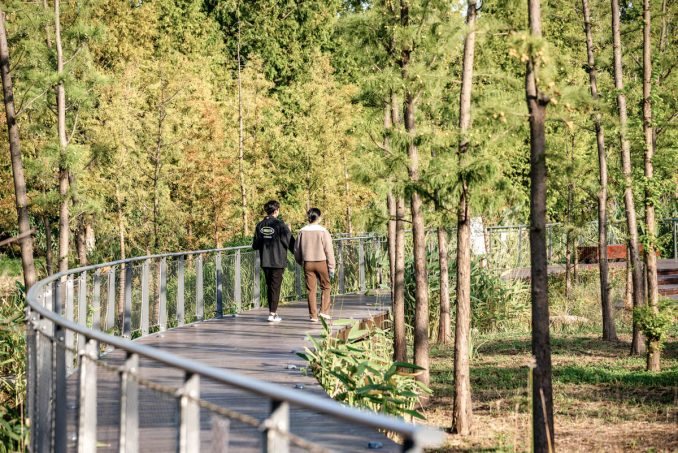
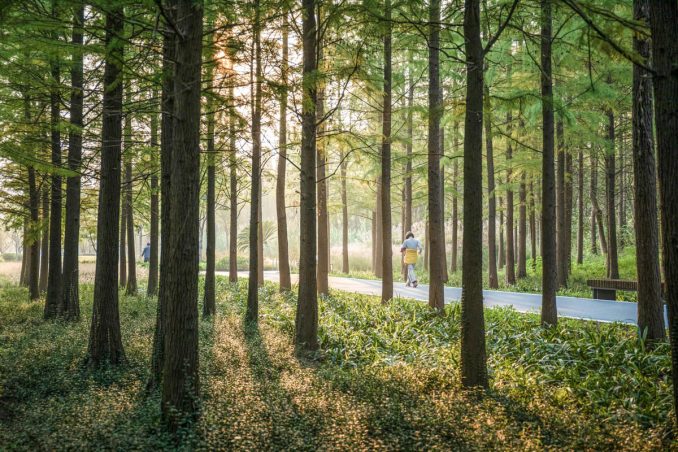
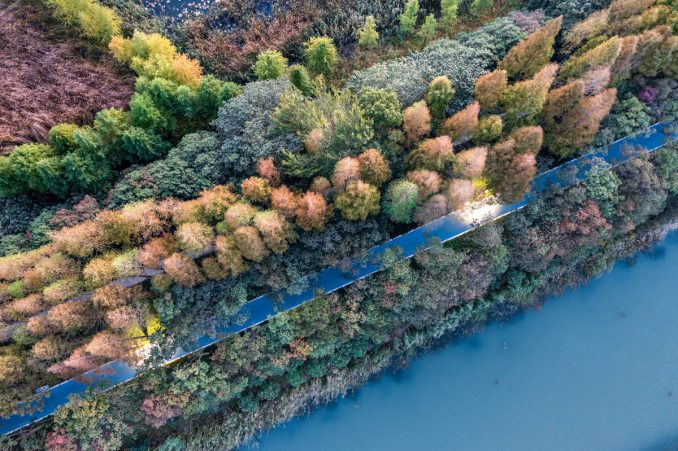
Miaojing River Corridor is designed not only to improve ecological health but also envision a culturally and socially vibrant public space. Program areas are placed according to the adjacent land uses. Play Areas, Picnic Lawns, and Ecological Education Center are designed for nearby residential neighborhoods. They are accompanied by supportive amenities like restrooms and bike racks. Forest Amphitheater and Park Cafe, along with elevated, hidden viewing platforms, provide gathering and strolling opportunities for the education and research institutions nearby.
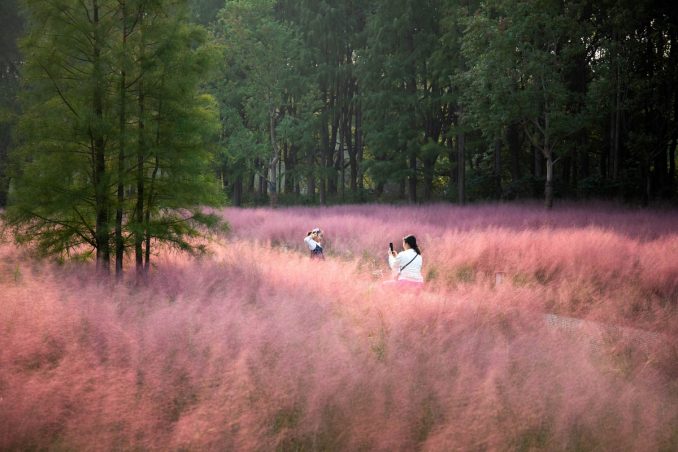
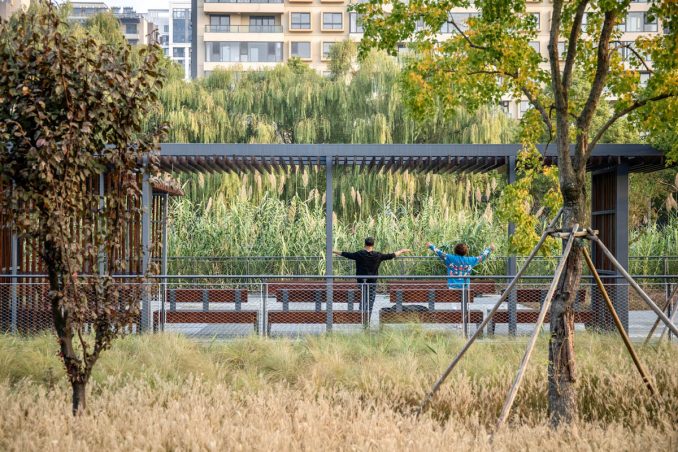
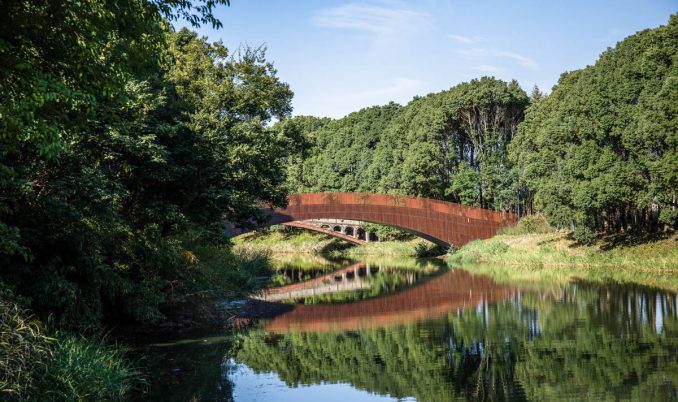
Both wayfinding and educational signages are designed to provide directions and increase public awareness toward sustainability and the importance of the overall water system in this region.
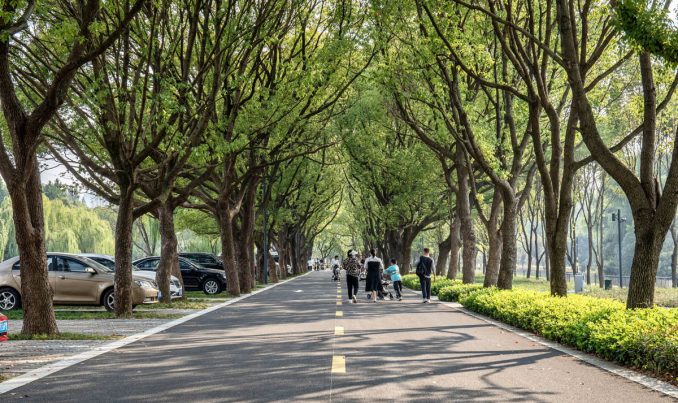
After its completion and opening to the public in early 2022, it has become a popular and well-utilized public space in Kunshan. Community concerts, events, daily strolling, jogging, and biking take place both weekdays and weekends. This hidden treasure is now being embraced and shared with the public, serving the community ecologically, and culturally.
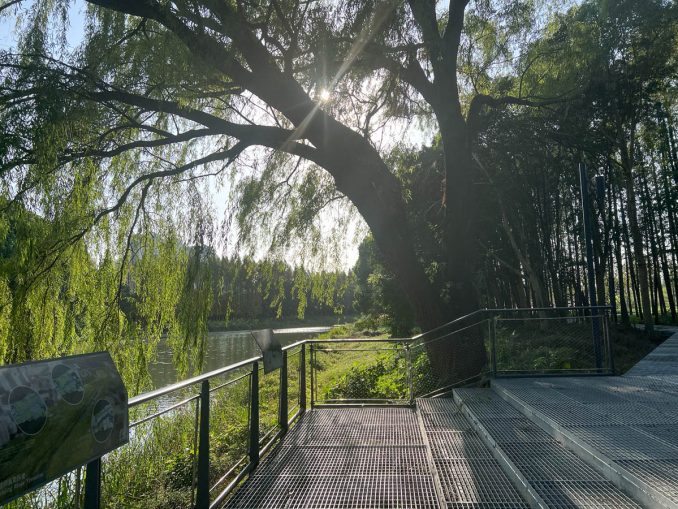
Miaojing River
Location: Kunshan, P.R. China
Landscape Architect: PLAT Studio
Other designers involved in the design of landscape (architects and landscape architects): LDG (construction drawings) / Great Ecology (Ecologist)
Photography: ZHIYI and KCID
Text: PLAT Studio

